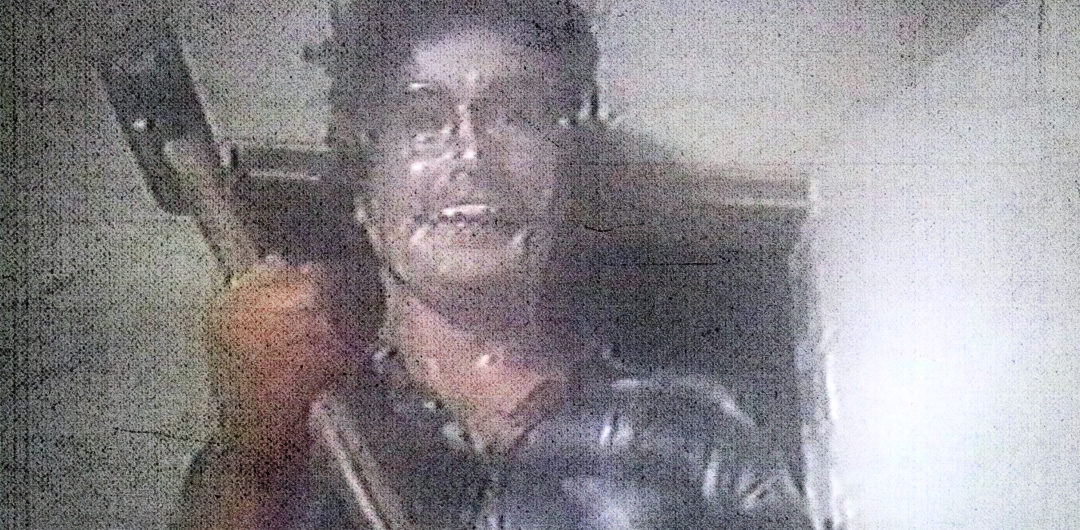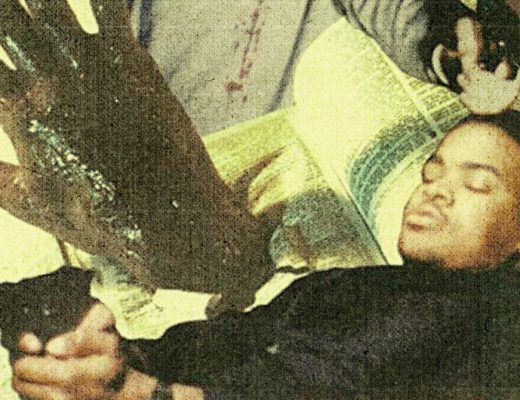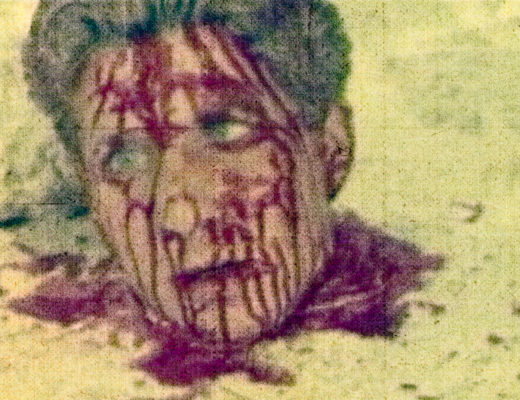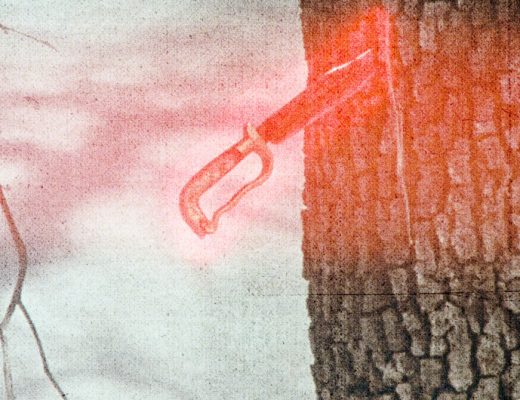It’s a brisk Friday night in June, 1985. You’ve stumbled into the must of Dave’s Video, your local VHS rental depot, just minutes before the locks clack shut. In the mood for a horror movie, you make your way to the back of the store, past the “Adult” room that’s really more of a broom closet and the wall of new releases. Not knowing a whole lot about horror films, you are soon fascinated by two covers that look pretty good: Night Of The Living Dead, which features a painting of a grave-erupting zombie and a big Media logo in white across the bottom, and Blood Cult, which brandishes a bloody machete and screams “In the tradition of horror legends — Psycho, Halloween, Friday the 13th!” You’ve heard of those movies, right? You decide on Blood Cult.
Gotcha.
In the early 1980s, the art of huckster exploitation was all but dried up. The slasher elites, like 1978’s Halloween and 1981’s Friday The 13th, didn’t rake in the dough by misleading their audiences. These films delivered on their ad campaigns and reaped the rewards as a result. And you know how the story goes from there. Whenever there’s a bandwagon with the whiff of greenbacks floating behind, it will be jumped. So what happens when Joe Schmo takes the gory wheel and figures out how to make a pleasant profit with a less-than-stellar approach? You have no idea.
Rev up the gears on your big-buttoned JVC deck and check the messages on that toaster-sized answering machine. We’ve entered the world of 1980s shot-on-video (SOV) horror films. Often the most mindlessly awful movies to ever beam from wood-paneled Zenith television sets, these mutants are truly baffling, yet strangely fascinating. Perhaps one of the last true shills in exploitation marketing, films like Blood Cult and Death Row Diner pulled the wool over many renters’ eyes. Because, instead of an actual “movie,” take home viewers were violated by 90 minutes of overly sleazy guts ‘n’ boobs, all filtered through the lens of a consumer quality camcorders and 3/4” tape. No-budget producers tapped into a goldmine when they realized that it was cheaper to finance their own productions than license existing films. And why not? Since a renter couldn’t detect the filming method by its box art, it was too late once they returned home. The $2 had already been spent.
For normal people, SOV horror films produced from 1982 through 1988 are terrible, offering little in the way of entertainment value, let alone redeeming qualities. I’m not going to dispute that and wouldn’t want to. But you’ve got to hand it to these filmmakers — if nothing else, they created a product and got it released, often with great financial success. That in itself is completely admirable. As for the content? There’s a full range of extremities, from unbearable boredom to hysterical datedness to way-over-the-top sex and violence. Many will leave you with disgusting feelings. In fact, most of the films discussed here contain enough filth to fill AT LEAST ten economy-sized garbage bags. Not surprisingly, nearly every SOV oddity produced during this time remains shrouded in mystery. As of this writing, one sole film has survived the transition to DVD. Although the world might be a better place if these chancres stayed buried, the facts, faces, and intentions remain bewitching. Like it or not, these releases were a large part of the then-developing culture of home entertainment; in one case, they even spawned a company that still thrives today. For that reason alone, the history behind these movies is worth looking into. I’ve just cleaned my VCR heads. I’m ready.
In 1985, Blood Cult hit rental stores across the U.S., billed as “The first movie made for the home video market” by Variety and The Hollywood Reporter. The distributor was United Entertainment Pictures, a Tulsa, Oklahoma company started by Bill Blair to produce and distribute SOV horror films on home video. Mr. Blair notes that, “…at the time [Blood Cult] was a new item on the market. It was highly successful in it’s return. This prompted us to immediately do The Ripper. At the same time, we were scripting Blood Cult 2, later named Revenge, and it was released as such. Revenge was even more successful than Blood Cult.” Without a doubt, United’s work had a huge impact on this then-developing mini-genre. But I’m getting ahead of myself.
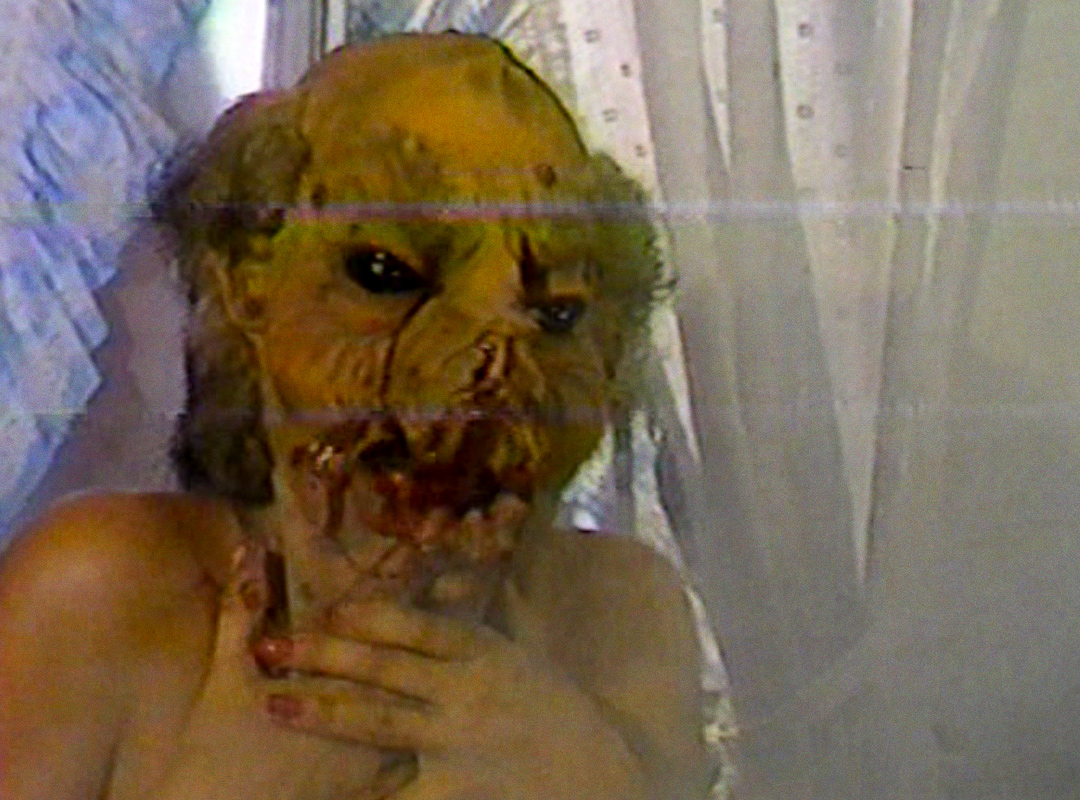
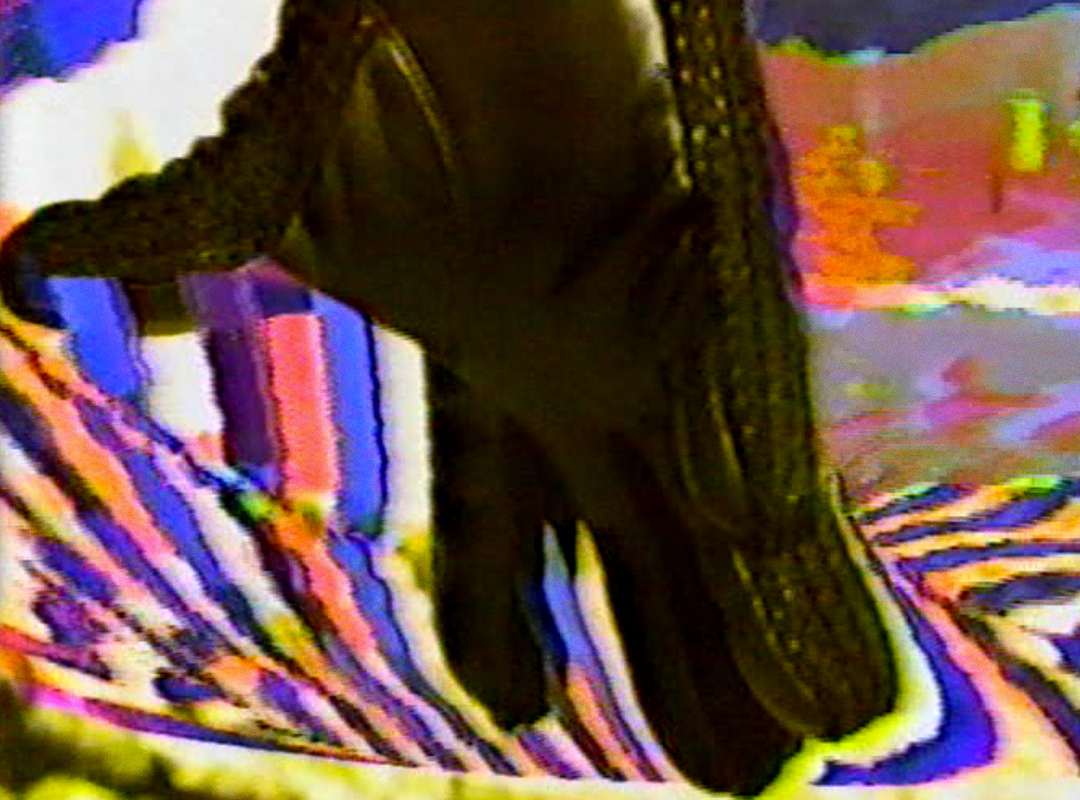
May, 1982. A handful of teens pile into a drive-in outside of Long Island, New York. That night, they steam up the windows while taking in one of the first SOV films to ever be shown theatrically, horror or not. The film was Boardinghouse (John Wintergate, 1982), released onto the Beta and VHS formats as House Geist by Ariel Video later that year. It would go on to see release under four different companies, ending up with a 1985 release by Paragon under the title Boarding House. To call this film insane is an understatement. The plot follows a psychic gigolo in a leopard-print g-string as he rents out a cursed house to a never ending supply of primo slutz. The following 90 minutes offer up slasher-type killings, lots of sex-jinks, and an amazing amount of weirdness — pie fights, a severed pig head nightmare, an attacking refrigerator, and “Horror Vision,” which signifies upcoming violence with a neon swirl and a silhouetted black glove. As far as 80s draw-droppers go, there’s really no contest when this film steps into the ring. “Move…MOVE! Focus! WHITE LIGHT!”
Despite its numerous releases, the LA-shot Boarding House remains one of the most mystery-shrouded SOV films of all. Virtually everyone listed in the credits never worked on a film again, including director/writer/star John Wintergate and actress/star Kalassu. Actress Alexandra Day went on to appear in some softcore porn and Brian DePalma’s Body Double. Other than that, information on the film’s background is nonexistent. Still, Boarding House grabs its cut of cinema history by being the very first shot on video horror film, even garnering playdates on New York’s 42nd Street with its blown-up-to-35mm print. What a debut. And what a swan song.
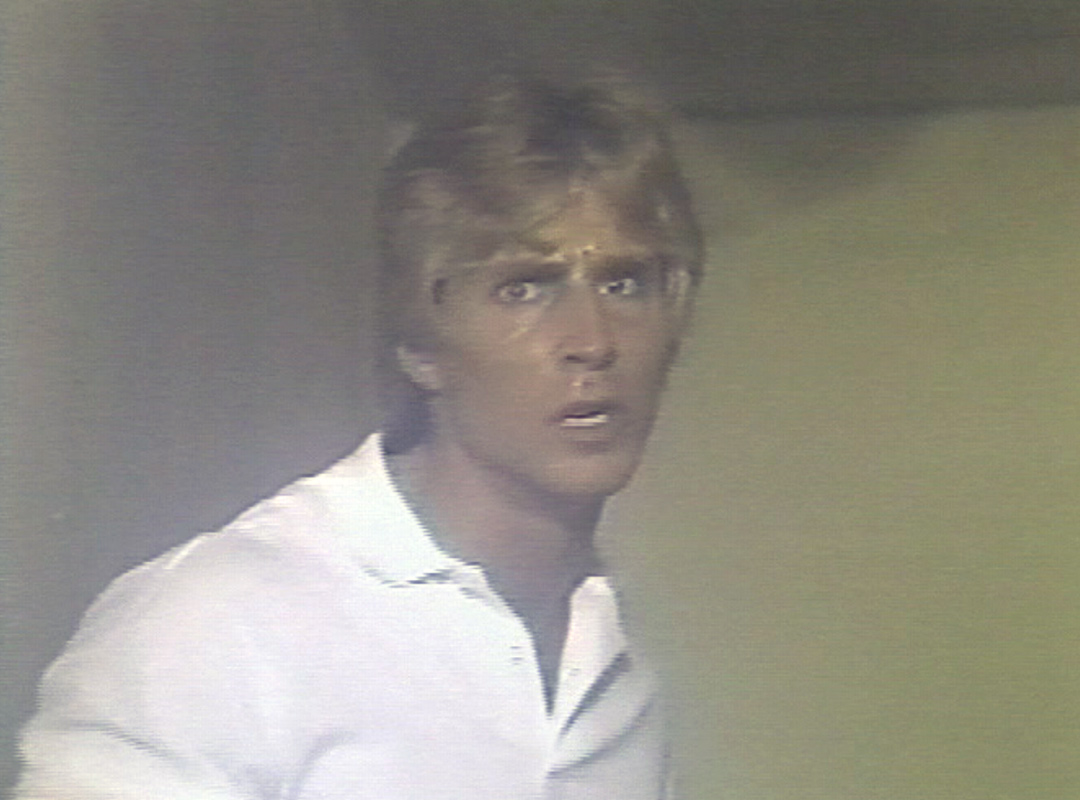
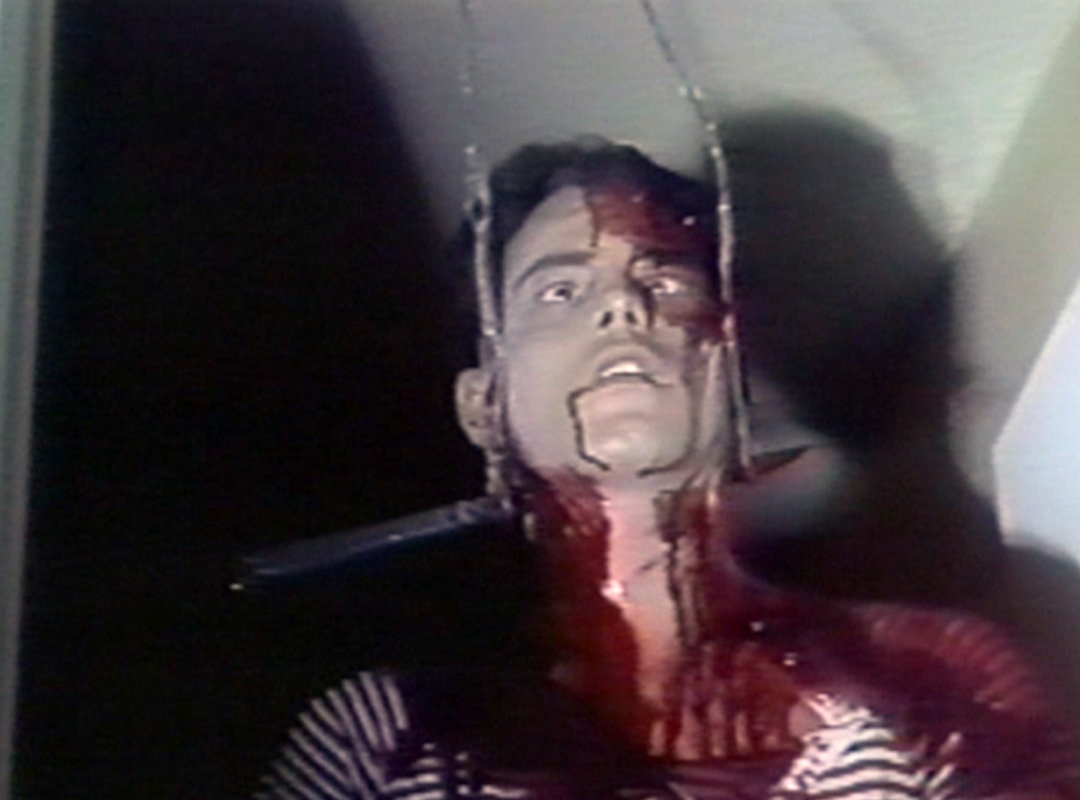
So was Blood Cult’s tagline really all it was cracked up to be? Since Boarding House played a few theatrical dates, all seems right; if only Sledgehammer (David A. Prior, 1983) didn’t exist. While it’s uncertain as to the reasoning behind its production, Sledgehammer definitely hit video a year prior to Blood Cult, thanks to World/Norstar Video in 1984. Who’s ready to party?
In a sweaty mess of testosterone, super-tight pants, and feathered hair, a group of REAL party animals hole up in a white-walled condo that houses the spirit of a killer with a sledgehammer. The behemoth killer shares a psychic link with the ghost of an abused little kid, who may have murdered his mother and her lover at some point. While we wait for the kill scenes to come around, we valiantly experience the following: stellar Bill Murray impressions, the ripping apart of beer cans, a guy stuffing a full sandwich in his mouth, a food fight, an extremely odd sex scene, and the slow motion effects. Dear god, the slow motion effects — doors opening, locks turning, walking around, making out, sledge hammer attacks, establishing shots, and on and on. The gore is hysterical (Special Effects By Blood & Guts!), the soundtrack will crack your eardrums, and the ending gets a little unsettling, if only for the claustrophobic confines of the tiny condo hallways. Make way for a shirtless Ted Prior, saving the day WWF-style: dynamite!
The debut production from grade-Z trash kingpin David A. Prior (Killer Workout), Sledgehammer obviously defines 80s hilarity, just as Boarding House satisfies the weird set. Concurrently, it’s also one of the cheapest looking SOV horror films I’ve come across, utilizing two sets (inside and outside) and severely abusing an outer establishing shot for minutes on end, not to mention the obsessive slow motion camera effects. Keeping up the track record, information regarding the production of this $40,000 vid has faded into nothingness. Mr. Prior hasn’t helmed a film in close to eight years and the one lead I stumbled upon (an actress who appeared in the film) chose not to comment. Sledgehammer remains intently obscure, perhaps where it best belongs.


Like any lucrative trend, there’s always a leak that swiftly uncorks the floodgates. In the case of SOV trash, the Tulsa lensed Blood Cult (Christopher Lewis, 1985) was it. Originally written as a treatment by producer Bill Blair and set to star Buster Crabbe, the film received a facelift by Blair and director Christopher Lewis after Crabbe’s passing. The result? A quirky jumble of fun-yet-tedious garbage that would kick off the partnership’s three picture run, ultimately leading to bigger budgets and — holyshit! — actual film stock.
After the longest slasher point-of-view opening ever conceived (“It baffled even the experts!”), we meet Sheriff Ron, a dead ringer for Harry Carrey by way of Charles Nelson Reilly. He’s on the trail of this sorority girl killer, who wears Chuck Taylors and leaves little golden amulets on the body of each victim. Ron is having a hard time cracking the case, as sitting around and talking seems to have no effect! Lucky for our hero, he’s got his daughter Tina to help out. Tina is supposed to be in college and works at the school library. She’s got to be at least 35 in real life. Due to Tina’s expert sleuthing skills, we find out that the slasher seems to be killing to appease the satanic god Cannibis, collecting various body parts as he goes. Graphic gore, a preoccupation with salads, and oodles of never ending talk are all par for the course. “Could this be a Dungeons & Dragons game?” I don’t know Sheriff Ron. I just don’t know.
Boistered by a not-completely-true-yet-effective ad campaign (which far exceeded the cost of making the film), Blood Cult made its mark in a big way. It was effectively shot and less weird than previous SOV product, perhaps establishing an approachable middle ground for these types of films. Whatever the reasoning, Blood Cult filled a cranny, showed a large profit, and sent United Home Video on its way. Bill Blair notes, “Riding on the success of Blood Cult, the market seemed to be growing…the horror fans were excited about all of our projects. It turned out to be quite a successful genre for us.” So what was next?


While the iron was hot, Lewis and Blair returned for another dose of SOV mayhem, The Ripper (Christopher Lewis, 1985), this time with top billed 80s make-up man Tom Savini in tow. Taking the general template for Blood Cult and upping the gross-out gore content, The Ripper moves just as slow as its slightly older sibling, but delivers twice the laughs.
Richard, a nerdy college professor teaching a class called “Famous Crimes On Film,” fixates upon an old ring in an antique shop. Curiously, the exact same ring is detailed in a Jack The Ripper tome. One and the same?! Richard’s Jazzercise fiancé wants a brass headboard, but Rich goes the selfish route and plunks down fifty c-notes for the gaudy trinket. Next thing you know, he can’t sleep and suffers from dinner troupe theater nightmares, in which a top hat clad villain disembowels women. Meanwhile, a couple of homely college kids engage in extended make-out scenes (“You sure are sweet tonight,” “Yeah, so are you.”), a most hysterical workout sequence rips forth, and a gratuitous Blood Cult plug unfolds on a TV screen. Savini, as Jack The Ripper’s cat-eyed spirit incarnate, shows up during the last five minutes, proceeds to do his best Montag The Magnificent impression, then quickly exits. We get some seriously gross gore, throat slash by telephone chord (?), and a round of Trivial Pursuit to boot.
Despite every scene dragging on for about two minutes longer than it needs to (adding up to a total runtime of 104 minutes!), The Ripper kept the flow of hits going for United. Undoubtedly aided by briefly employing Savini’s “celebrity” mug and a thorough ad campaign, this movie cemented the facts: there was a market for these home-strewn productions, whether or not the public knew what they were getting into beforehand. As a result, United was able to expand and move forward as the upcoming flood of SOV dementia hit full steam. Blair split his company into a new division, VCI Home Video, to differentiate from United’s upcoming horror plate. Existing today as VCI Entertainment, the company still thrives and delivers top notch releases on DVD…all from a couple of regional video productions.
The stage was set and the market was willing. As 1986 reared its head, dozens of SOV films were on the verge of release.
Special thanks to Fred Adelman of Critical Condition and Bill Blair of VCI Entertainment for their help and participation.

